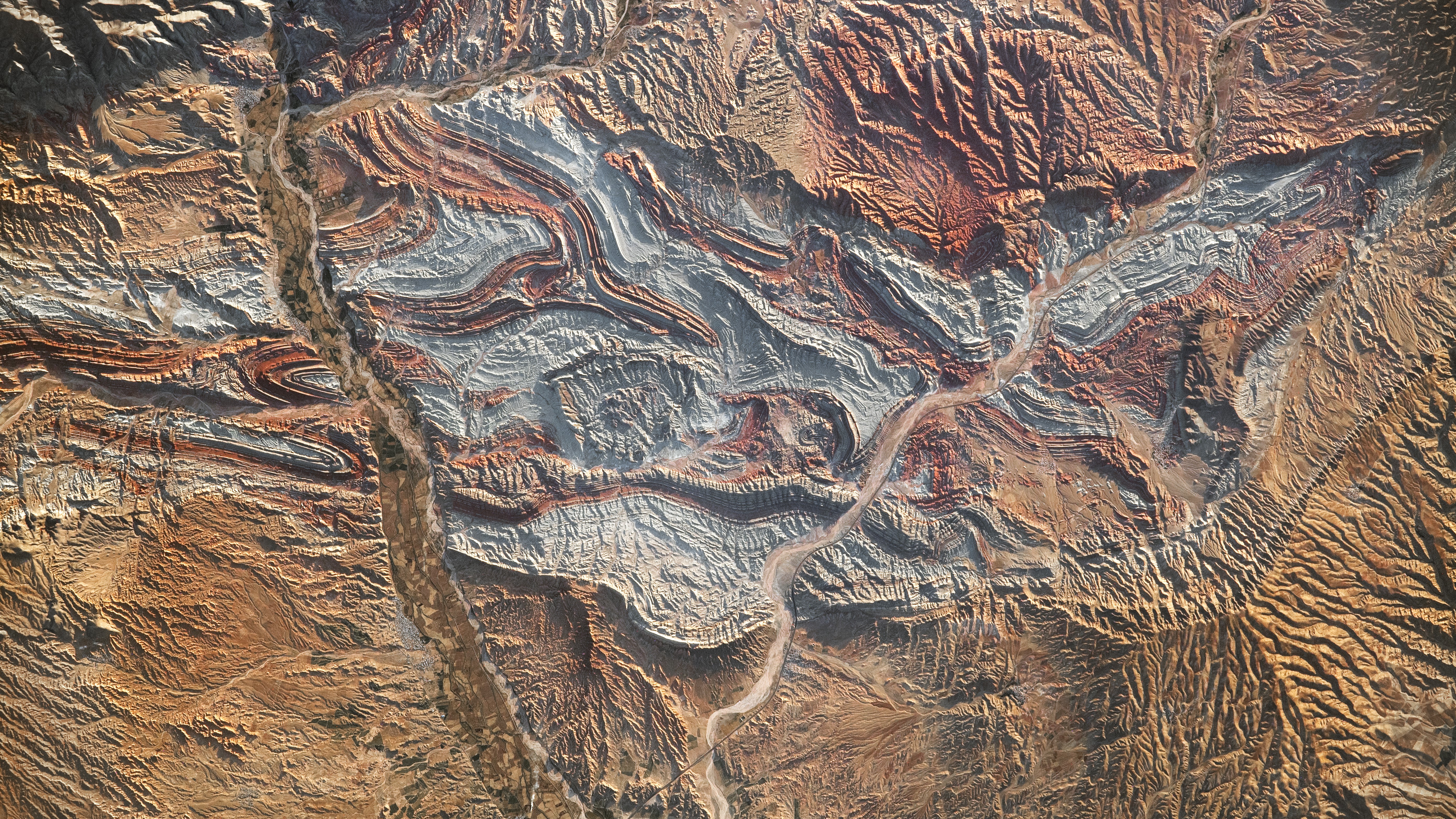In Photos: 'Bloodhound' Car Has a Jet Engine. And It Could Break the Sound Barrier.
Breaking the sound barrier
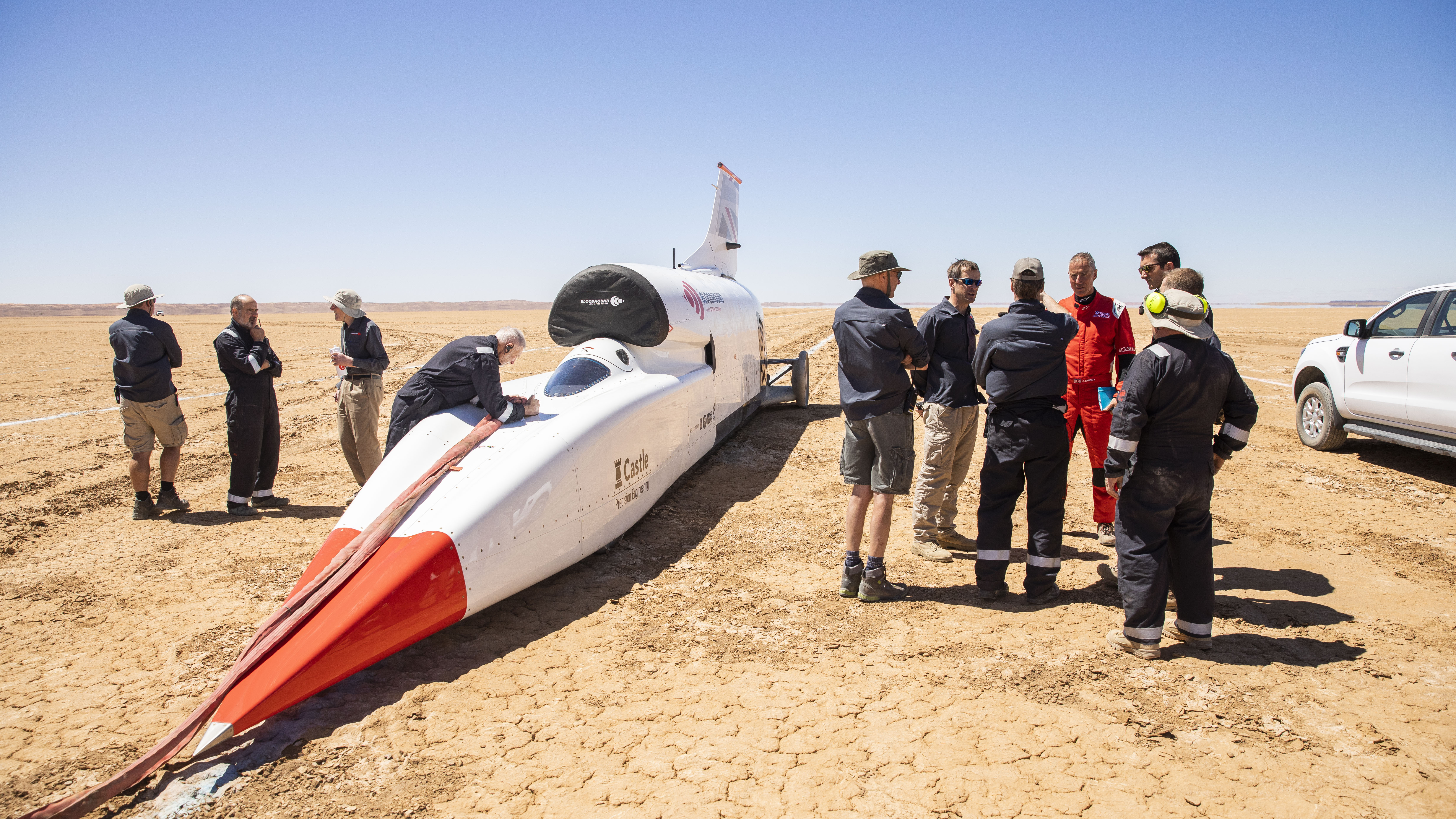
A jet and rocket-powered car designed to go faster than sound is back on track. The British-built Bloodhound car is theoretically capable of traveling at 1,000 mph.
That's Mach 1.3 – about 240 mph faster than the speed of sound.
The project ran into financial difficulty a few years ago, but now it has new backers and will attempt to set a new land speed record in the next 12 to 18 months.
Desert track
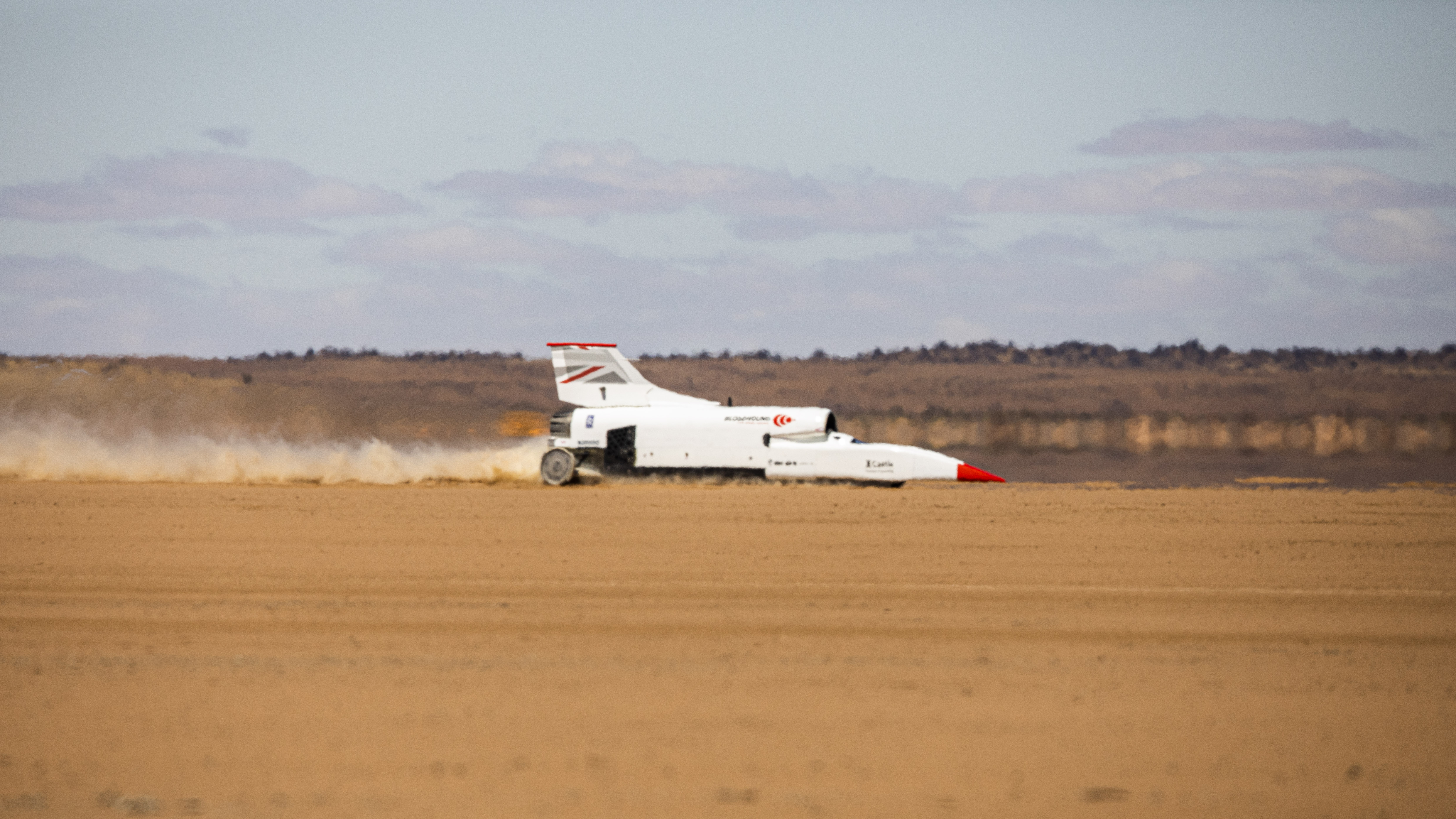
The Bloodhound has been shipped to a desert track in the Northern Cape province of South Africa for a new round of tests. The tests are designed to measure the aerodynamic stresses on the car and to test out its braking systems. So far it's reached 501 mph (806 km/h).
Absolutely aerodynamic
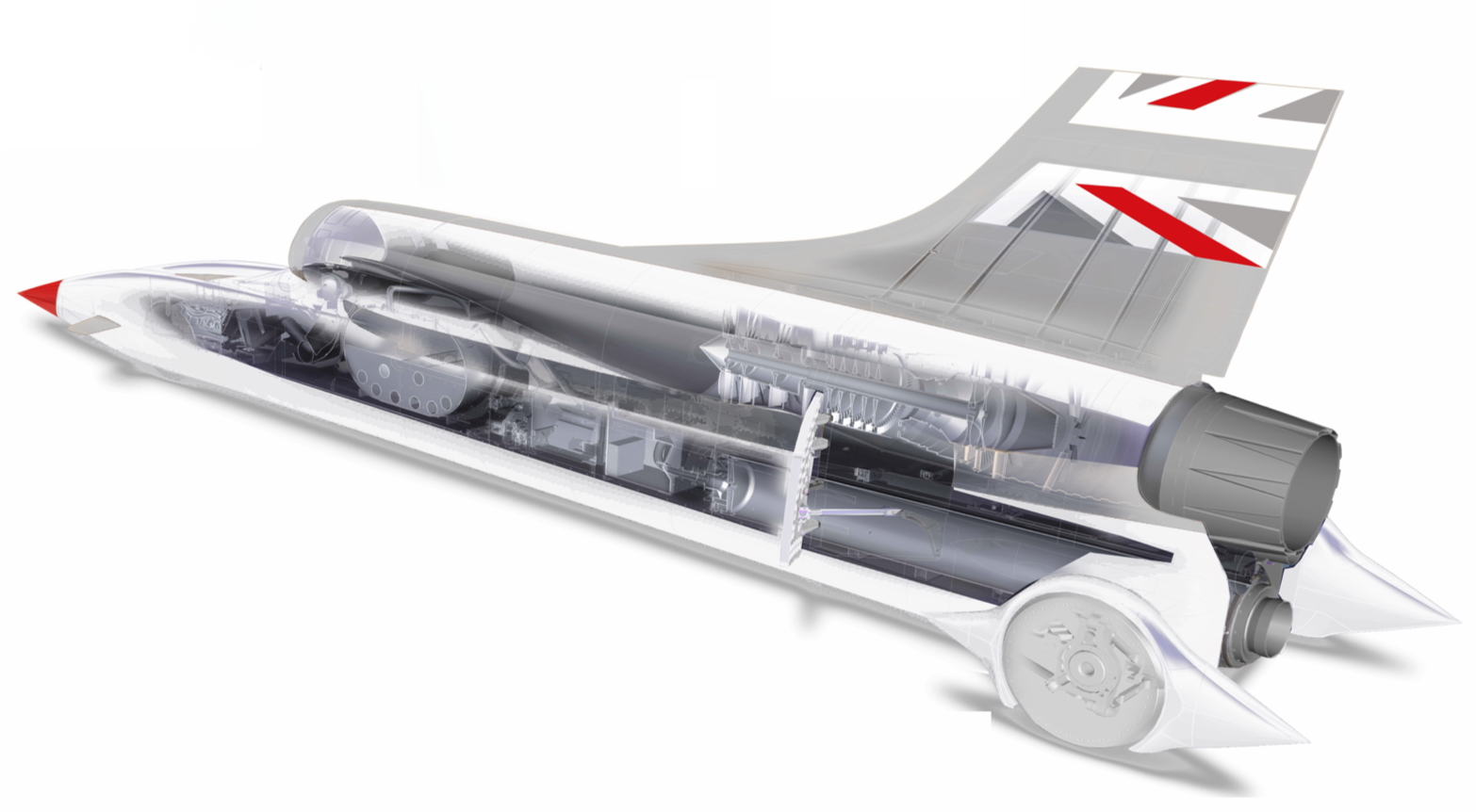
Bloodhound car is driven by a Rolls-Royce EJ200 turbofan jet engine — the same as used for the Eurofighter Typhoon aircraft. For its supersonic attempt at the land speed record, it will be fitted with an additional rocket thruster made by a Norwegian and Finnish company. The car is desired to be as narrow as possible, to avoid aerodynamic stresses. It weighs 7 tons, and its carbon-fiber body rides about 5 inches above the ground.
Land speed record
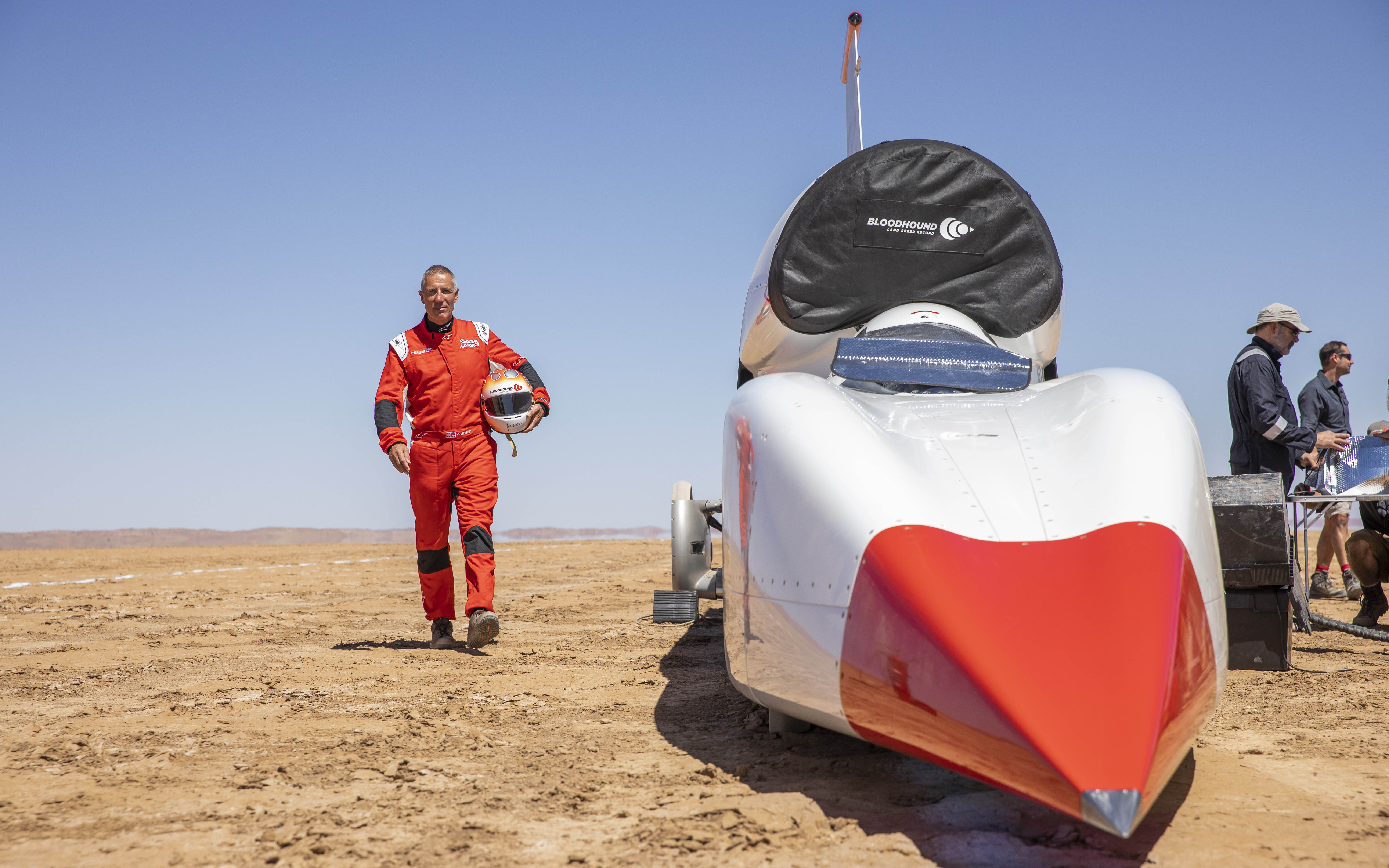
The existing land speed record is 763 mph (1,228 km/h). It was set by former Royal Air Force pilot Andy Green in 1997, driving the Thrust SSC supersonic vehicle in Nevada's Black Rock Desert. Now, Green is driving the Bloodhound for its speed tests in South Africa — and he will be behind the wheel for the coming record attempts.
Golden Arrow car
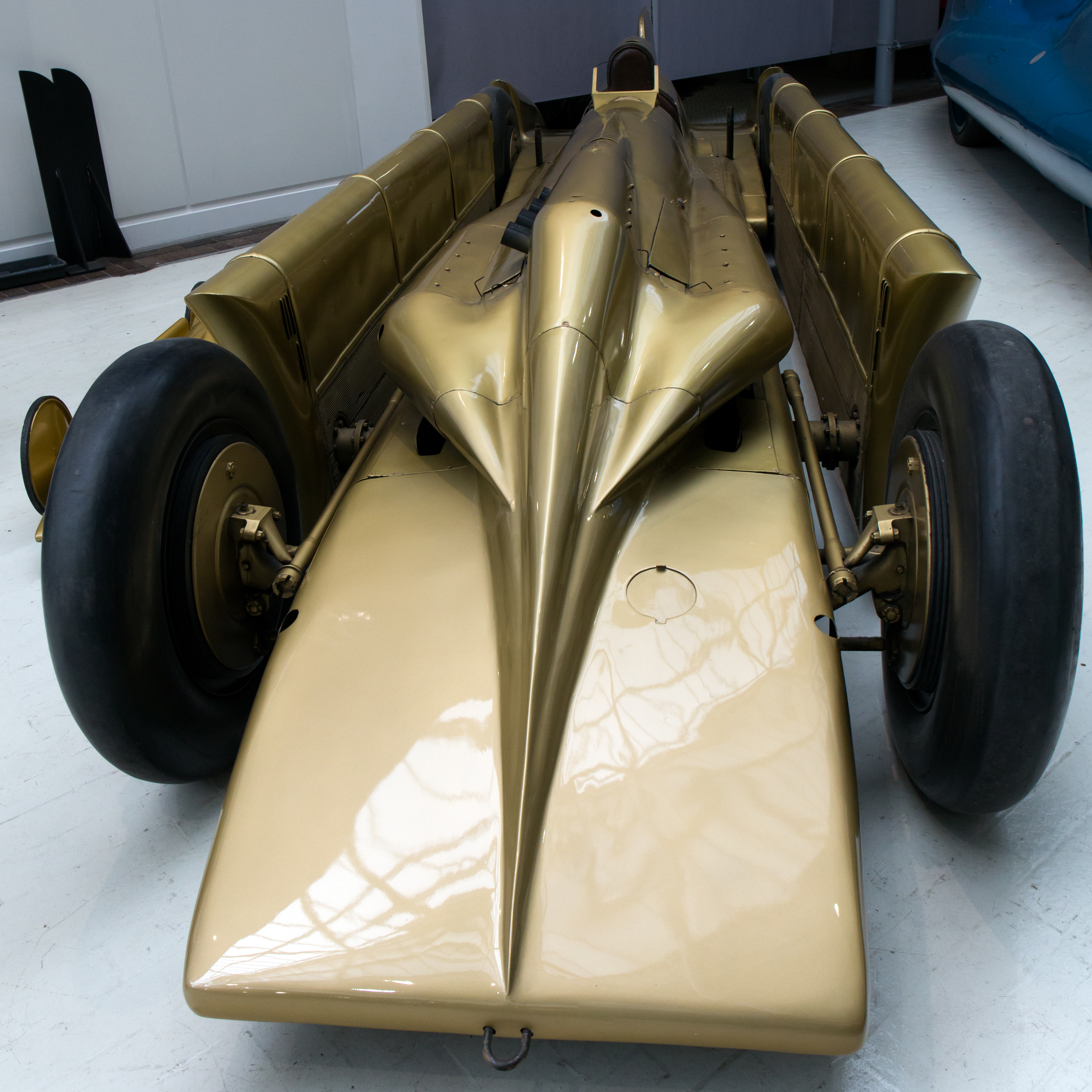
The coveted land speed record has a history going back more than 100 years. It was first recorded in France in 1898, when Gaston de Chasseloup-Laubat drove an electric car at a speed of 39 mph. The first car to break 100 mph was in Belgium in 1904, driven by Louis Rigollay. The Golden Arrow car shown here, driven by Henry Seagrave, set a new land speed record of 231 mph in 1929.
Bluebird CN7

One of the most famous land speed record attempts was in the Bluebird CN7 in 1964. Donald Campbell drove the gas turbine car, which reached a top speed of 403 mph. Campbell also attempted several water speed records, and he remains the only person to have set world land and water speed records in the same year, in 1964. But he died in crash during a water speed attempt in 1967.
Thrust SSC
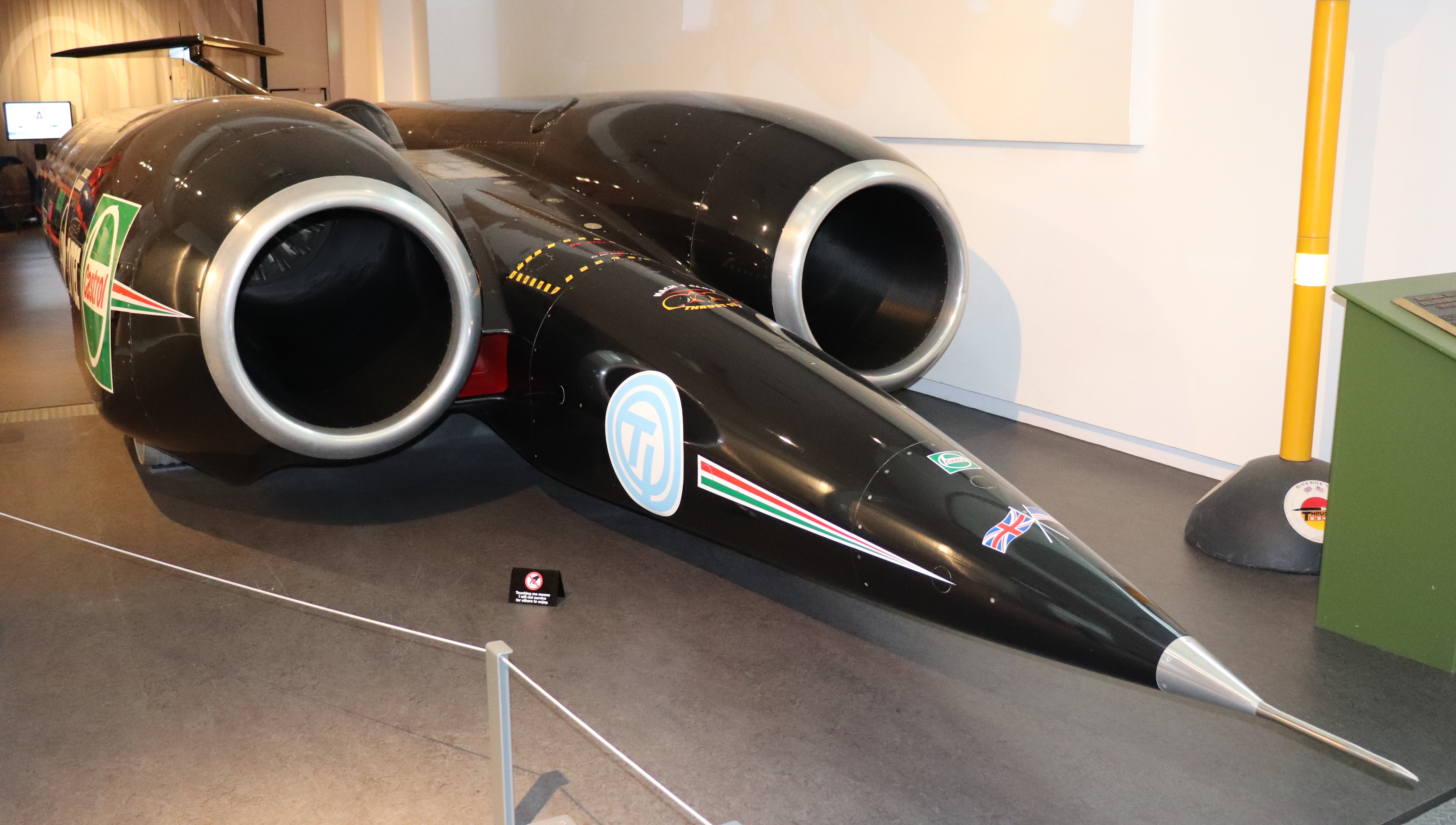
The only car ever to go faster than the speed of sound is Thrust SSC, which set the existing land speed record of 763 mph (1,228 km/h) in Nevada in 1997. The jet-powered car was driven by Andy Green, who will also drive the Bloodhound when it attempts to exceed that speed and set a new land speed record.
Virtual wind tunnel

Engineers have designed the Bloodhound with powerful computers that create a "virtual wind tunnel," detailing the behavior of the car at higher and higher speeds. Traveling faster than the speed of sound is now straightforward for supersonic jet aircraft — but breaking the sound barrier a few inches above the ground is a very different challenge. Aerodynamic engineers say the narrow gap between the underbelly of the car and the ground is especially problematic.
Perfect track

The Bloodhound team will spend a couple of weeks on the test track in South Africa, measuring the performance of the car and comparing it to the computer models created in the virtual wind tunnel simulations. They are also checking out the car's braking systems, including a parachute and air brakes. South Africa's summer rains will then set in to the region, flooding the lakebed where the track has been built and making the ground level again for further tests next year in 2020.
How fast can it go?

If all the testing goes according to plan, Bloodhound will attempt to set a new land speed record in the fall of 2020 or early 2021. Whether the car will attempt to go even faster — and eventually reach its theoretical top speed of 1,000 mph — will depend on the outcomes of the tests and record attempt.
- Hyperloop, Jetpacks & More: 9 Futuristic Transit Ideas
- Speedy & Swift: The Fastest Animals in the World
- Image Gallery: Breaking the Sound Barrier
Originally published on Live Science.

Sign up for the Live Science daily newsletter now
Get the world’s most fascinating discoveries delivered straight to your inbox.
Tom Metcalfe is a freelance journalist and regular Live Science contributor who is based in London in the United Kingdom. Tom writes mainly about science, space, archaeology, the Earth and the oceans. He has also written for the BBC, NBC News, National Geographic, Scientific American, Air & Space, and many others.










